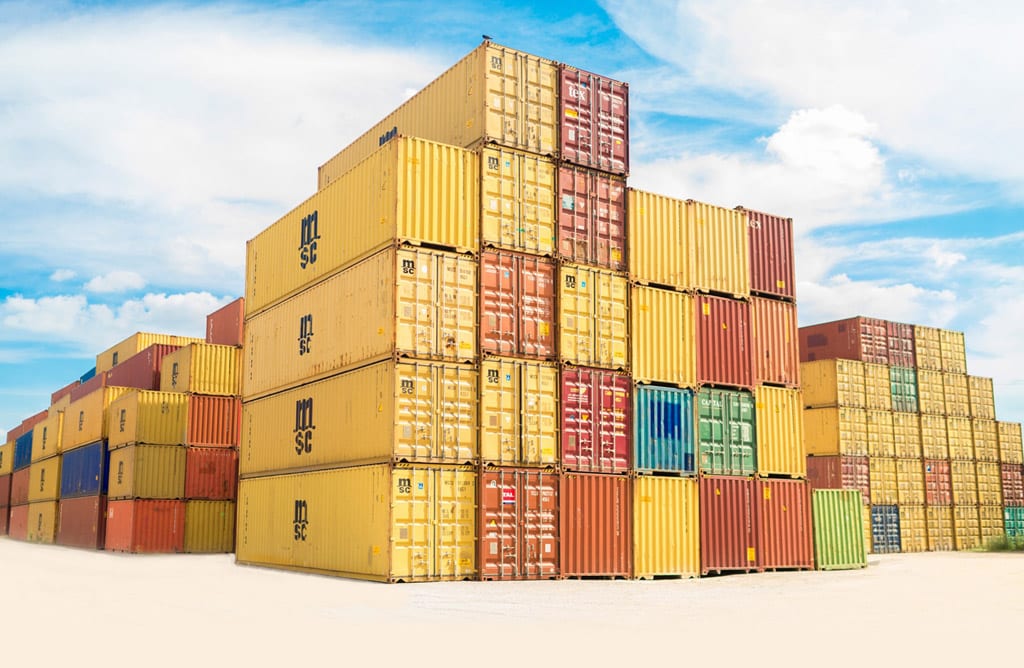
Standardised containers have become an essential component of modern globalisation, carrying by sea almost half the world’s trade, a proportion that has risen since the pandemic-related reduction in journeys made by passenger aircraft, which also carry goods in their holds. Containers are also taken by rail. They were manageable and dramatically slashed the price of transport. In recent months, their freight prices have rocketed as the effects of the pandemic and changes in people’s consumption habits have kicked in. This has triggered a slowdown in international trade, some supply shortages and price rises in Europe and the US in terms of certain goods originating from Asia, especially China.
In his magnificent book about these ‘boxes’ (first published in 2006), Marc Levinson gave an excellent explanation of how these maritime standardised containers, of modest dimensions, ‘made the world smaller and the economy larger’. By reducing the cost of transport, they enabled industries to relocate their factories far from their consumers, paving the way to the industrialisation of Asia, particularly China, and bringing products ‘of a previously unimaginable variety’ to Europe, the US and elsewhere.
Levinson noted that they did not emerge out of the blue, and their supremacy took time to take root. Although the idea of stackable containers goes back to the early days of human history, modern standardised containers were invented by the businessman Malcom McLean, who made his first shipment with this system from New York to Houston in 1956. He persuaded his government to use his containers to ship supplies to US troops during the Vietnam War. It subsequently took him years to convince the world –including the conservative stevedore unions in the US– of the technology’s potential to give an impulse to world trade. Without containers, which have transformed the operations of the world’s largest freight ports and railway stations, globalisation would have taken a lesser and different form. To a large extent the handling of such containers has now been automated, much to dock workers’ despair.
But in the context of the pandemic, containers have become a bottleneck for world trade. Their average shipping cost (for the 40-foot container, this being the unit in which they are measured, with the approval of the International Standards Organisation), has increased fourfold in the recent months. The average cost of shipping a container was US$1,400 in 2000 whereas now it exceeds US$5,000, and as much as US$10,000 for shipments from China to the US or Europe.

Global trade ground to a halt in the first half of 2020 as a result of the pandemic, and many containers were left stranded, empty and useless in various parts of the world. Since then, China has benefited most from the changes in many European and US consumers’ shopping habits; due to restrictions placed on the hospitality and travel industries and more remote working, these consumers started buying computers, televisions, consoles, equipment for keeping fit at home and even furniture, mostly originating from Asia, which replaced other goods in the containers. And of course, medical supplies.
The fact that many of these container ships reached Europe and the US from Asia and it was worth sending them back empty has contributed to the problem. Moreover, China has restricted the import of frozen products –in refrigerated containers– amid suspicions that they could provide the virus with a means of entry. Another factor contributing to the increased price of freight has been the long queues of ships at European and US ports, the productivity of these enormous facilities having fallen amid the infection of many of their workers and the healthcare measures that have been imposed.
Following a 50% fall in the first half of last year, the manufacture of new containers has been recovering in recent months, but due to the increased price of steel they are now more expensive, at around US$6,200 dollars each. Although there are already 180 million containers in the world, they are badly distributed in terms of current needs.
The increase in the price of seaborne container shipping –some in Asia are investigating land-based alternatives, especially among neighbouring and nearby countries– is partly responsible for pushing up inflation in Europe. According to the Oxford Economics consultancy, quoted by Le Monde, the extra transport costs stemming from these factors could push up current consumer prices in Europe by 9%, and in the case of some goods, like fridges, as much as 21.3% of the final price. It will not, however, have any effect on mobile phones.
Some experts believe that these conditions will persist for several months to come, depending on the impact of vaccines and other factors. But many countries, from the US to Europe, now want their supply chains in various areas, certainly in medical products and in computer chips, to be much less dependent on Asia, and in particular China, and wish to transform them. It may indeed be that we are moving towards a more proximity-based version of globalisation, and more digital, but it will continue to a large extent to involve physical products, and nothing has yet been invented for moving these to rival containers. They continue being essential.


